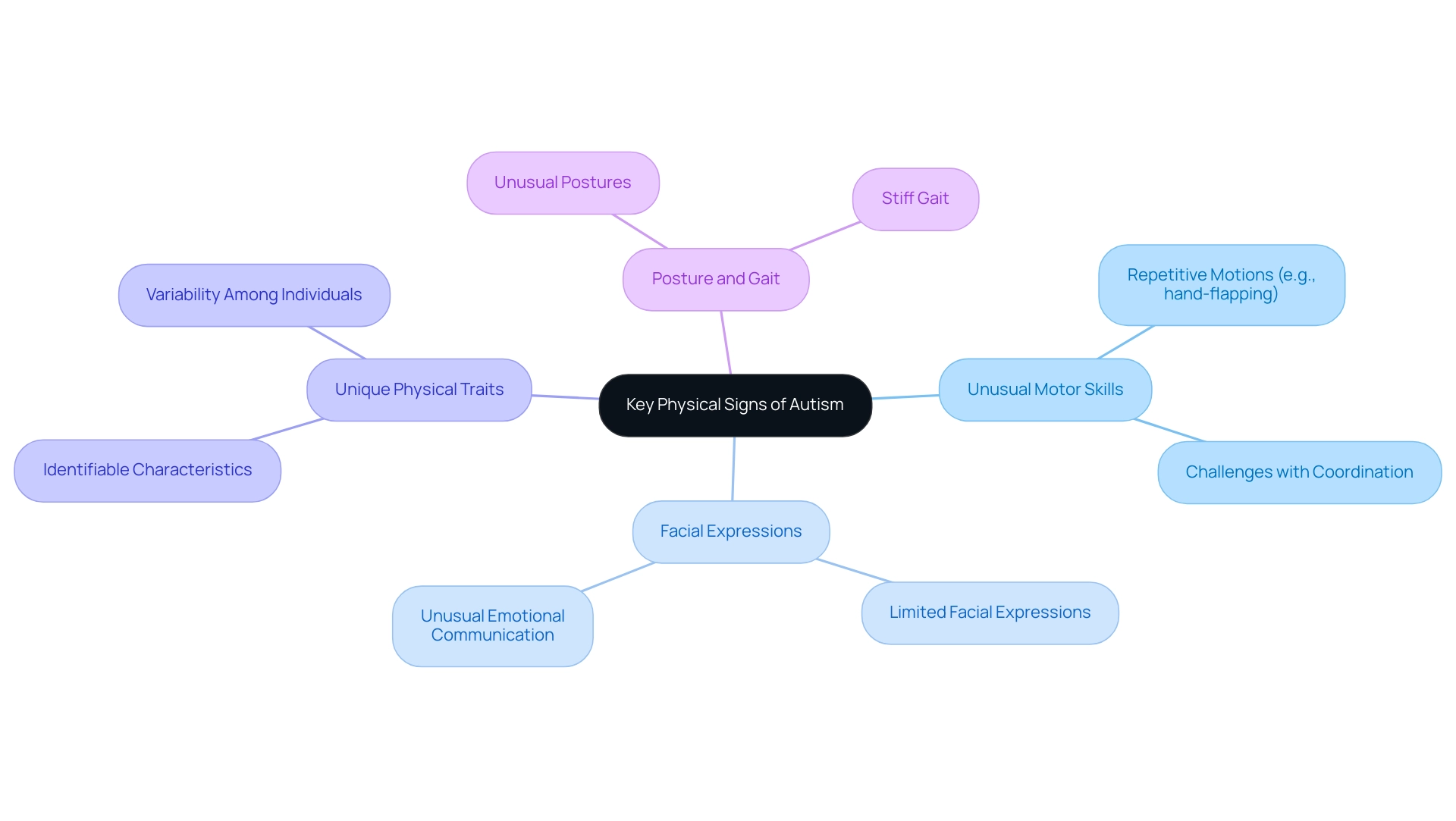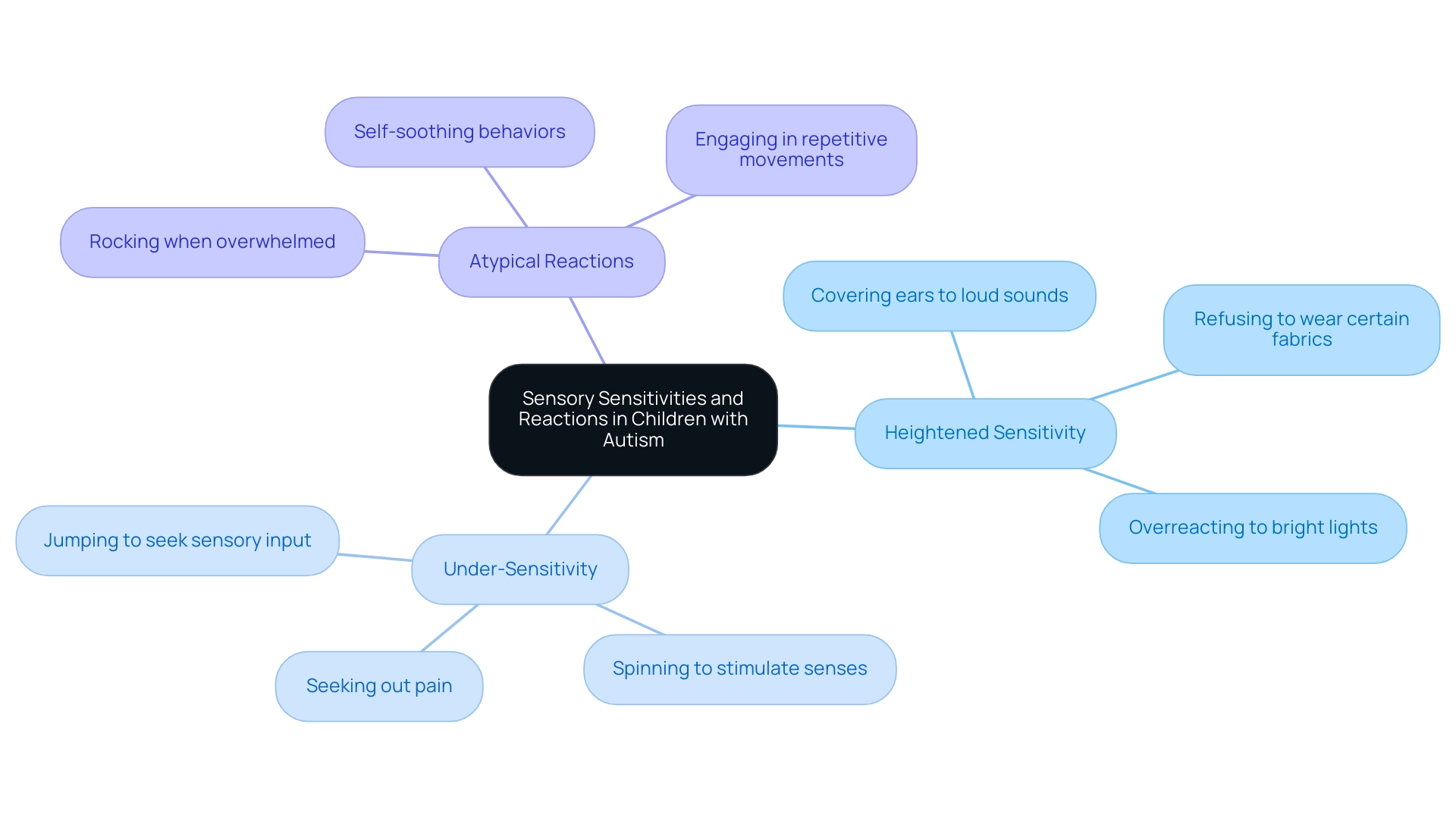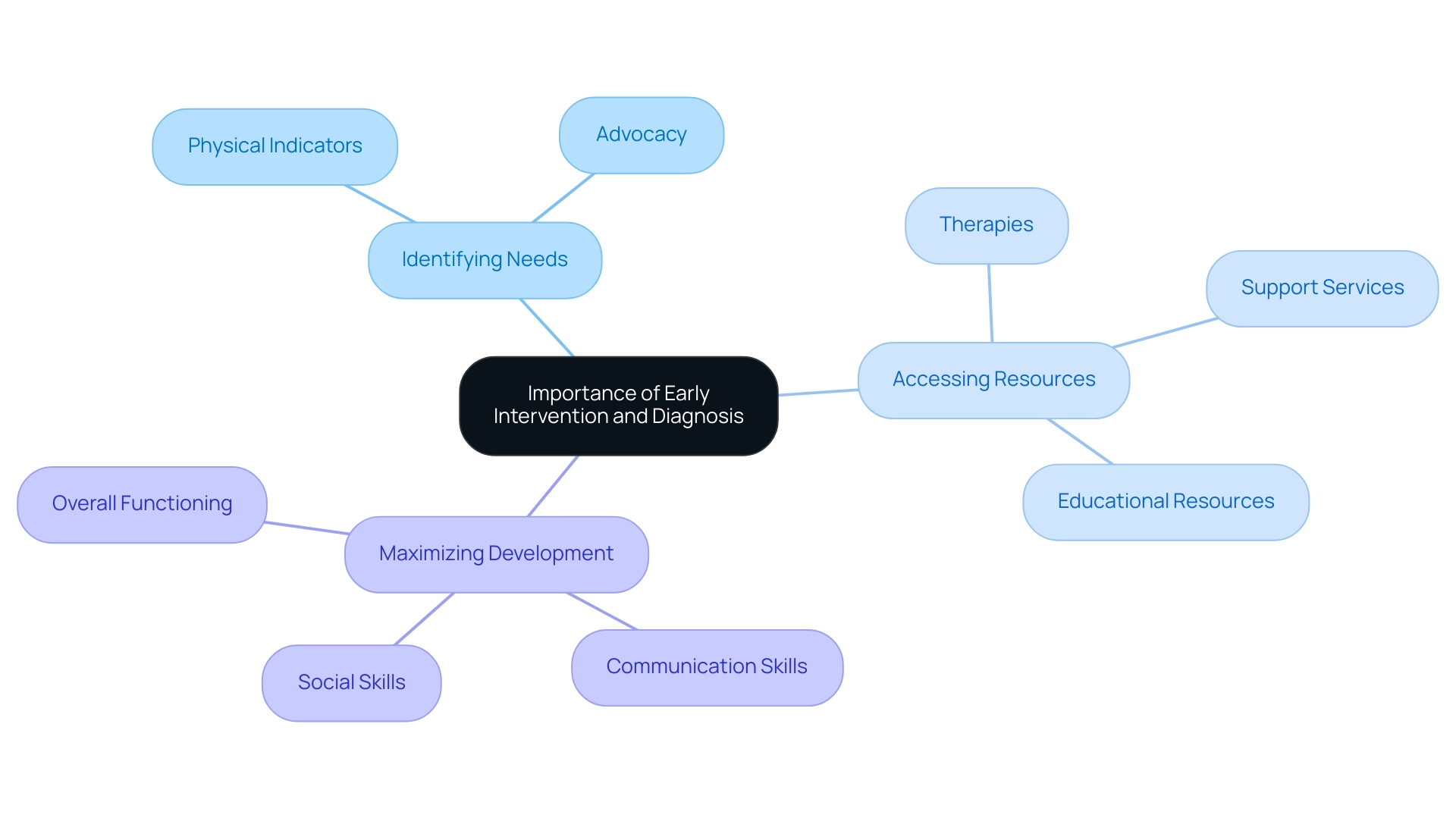Introduction
Navigating the world of autism can be both challenging and enlightening for parents. Understanding the key physical signs and sensory sensitivities associated with autism is crucial for recognizing a child's unique needs. From unusual motor skills and facial expressions to heightened or under-sensitivity to sensory stimuli, these indicators can provide valuable insights.
Early intervention plays a pivotal role in shaping a child's development, offering access to essential resources and therapies that can significantly enhance their communication and social skills. By being informed and proactive, parents can ensure that their children receive the support they deserve, paving the way for a brighter future.
Recognizing Key Physical Signs of Autism
Key physical signs of the condition may include:
- Unusual Motor Skills: Children with developmental differences may exhibit atypical movements, such as repetitive motions (e.g., hand-flapping) or challenges with coordination.
- Facial Expressions: Some young individuals may have limited or unusual facial expressions, which can affect their ability to communicate emotions effectively.
- Unique Physical Traits: While not all individuals with the condition have unique physical traits, some may display specific characteristics that are identifiable.
- Posture and Gait: Parents may notice differences in how their offspring stands or walks, such as unusual postures or a stiff gait.
By recognizing these signs, parents can better understand their needs and seek appropriate support and resources.

Understanding Sensory Sensitivities and Reactions
Children with autism may experience:
- Heightened Sensitivity: Some young individuals may be overly sensitive to loud noises, bright lights, or certain textures. For example, they may cover their ears in response to loud sounds or refuse to wear certain fabrics.
- Under-Sensitivity: Conversely, some young individuals may seek out sensory experiences, showing little reaction to pain or discomfort. This can lead to behaviors such as spinning or jumping to stimulate their senses.
- Atypical Reactions: Understanding how young individuals respond to sensory input is crucial. For instance, an individual may engage in self-soothing behaviors, like rocking, when overwhelmed by sensory stimuli.
Recognizing these sensory sensitivities allows parents to create a more accommodating environment that meets their unique needs.

The Importance of Early Intervention and Diagnosis
Early intervention can drastically change the trajectory of a young person with autism. Here’s why it’s important:
- Identifying Needs: By noticing physical indicators early, parents can advocate for their offspring’s needs and seek appropriate evaluations from professionals.
- Accessing Resources: Early diagnosis opens the door to various support services, therapies, and educational resources tailored to the child’s specific needs.
- Maximizing Development: Children who receive early intervention often show significant improvements in communication, social skills, and overall functioning, which can lead to more successful outcomes.
Parents are encouraged to remain vigilant and proactive in seeking support when they notice signs of autism. The earlier the intervention, the more effective the support can be.

Conclusion
Recognizing the physical signs and sensory sensitivities associated with autism is a vital step for parents in understanding their child's unique needs. From unusual motor skills and distinctive facial expressions to heightened or under-sensitivity to sensory stimuli, these indicators serve as essential tools for parents to advocate effectively for their children.
The importance of early intervention cannot be overstated. By identifying these signs early on, parents can access critical resources and support services that can significantly enhance their child's communication and social skills. The benefits of timely intervention are profound, as it often leads to improved outcomes and a brighter future for children on the autism spectrum.
Ultimately, being informed and proactive empowers parents to create a nurturing environment tailored to their child's needs. By embracing these insights and taking the necessary steps towards intervention, parents can pave the way for their children to thrive and reach their fullest potential.




